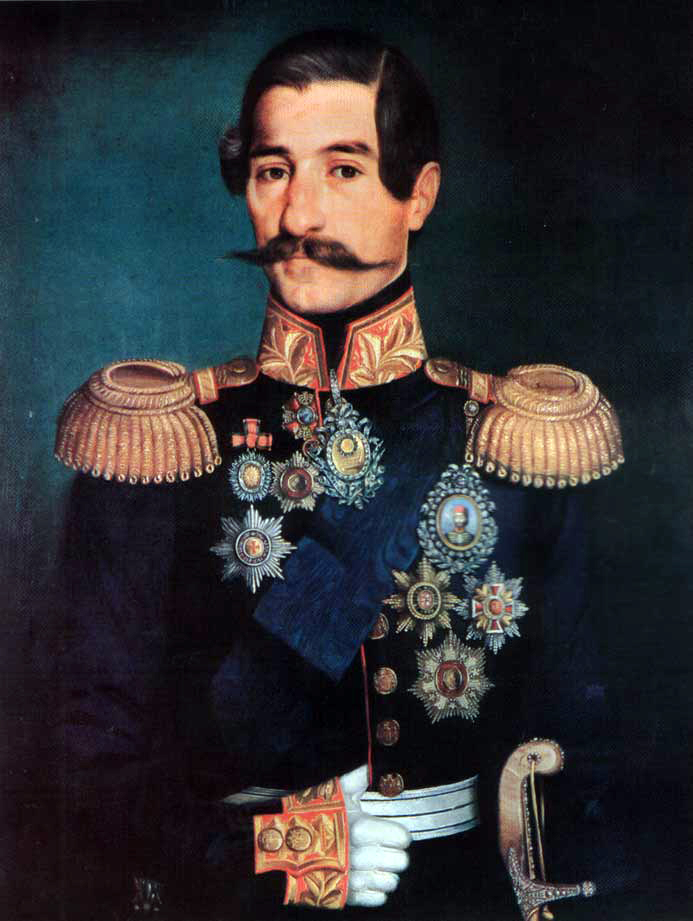|
Persida Nenadović
Persida Karađorđević née Nenadović ( sr-Cyrl, Персида Ненадовић; 15 February 1813 – 29 March 1873) was the Princess consort of Serbia, Princess of Serbia as the wife of Alexander Karađorđević, Prince of Serbia, Alexander Karađorđević, who ruled the Principality of Serbia from his election on 14 September 1842 until his abdication on 24 October 1858. She was the mother of ten children, including future king Peter I of Serbia, who succeeded to the throne after the May Overthrow, assassination of King Alexander I of Serbia, Alexander I, the last ruler of the Obrenović dynasty (the traditional rivals of the House of Karađorđević, Karađorđevićs). Life Persida was born on 15 February 1813 in Brankovina, Ottoman Empire (now Serbia), into Nenadović family, at that time the most powerful family in Serbia. She was the daughter of ''Voivode'' Jevrem Nenadović (1793–1867) and Jovanka Milovanović (1792–1880). Her paternal grandfather was Jakov Nen ... [...More Info...] [...Related Items...] OR: [Wikipedia] [Google] [Baidu] |
Katarina Ivanović
Katarina Ivanović (15 April 1811 – 22 September 1882) was a Serbian painter from the Austrian Empire. She is regarded as the first Serbian female painter in modern art history. Biography Ivanović was born in Veszprém in the Austrian Empire to a middle-class family, and grew up in Székesfehérvár. She initially studied painting in Budapest and enrolled in the Academy of Fine Arts in Vienna in 1835. Her friends and supporters included Teodor Pavlović, who wrote about her in ''Serbski Narodni List'', and Sima Milutinović, who devoted a poem to her in 1837. Ivanović traveled to Italy, France and Holland, and studied at the Academy of Fine Arts in Munich between 1843 and 1845. She worked in Belgrade from 1846 to 1847, where she painted portraits of notable people of the era, including Princess Persida Nenadović and Voivode Stevan Knićanin. In later years, she spent a lot of time traveling and living at different places, including Paris and Zagreb. Ivanović returne ... [...More Info...] [...Related Items...] OR: [Wikipedia] [Google] [Baidu] |
House Of Karađorđević
The House of Karađorđević or Karađorđević dynasty ( sr-Cyrl-Latn, Династија Карађорђевић, Dinastija Karađorđević, ; sr-Cyrl-Latn, Карађорђевићи, Karađorđevići, label=none) was the former ruling Kingdom of Serbia, Serbian and deposed Kingdom of Yugoslavia, Yugoslav royal family. The family was founded by Karađorđe, Karađorđe Petrović (1768–1817), the ''Veliki Vožd'' ( sr-Cyrl, Велики Вожд, lit=Grand Leader, link=no) of Revolutionary Serbia, Serbia during the First Serbian uprising of 1804–1813. In the course of the 19th century the relatively short-lived dynasty was supported by the Russian Empire and was opposed to the Austrian Empire, Austrian-supported House of Obrenović. The two houses subsequently vied for the throne for several generations. Following the May Coup (Serbia), assassination of the Obrenović King Alexander I of Serbia in 1903, the National Assembly of the Republic of Serbia, Serbian Parliame ... [...More Info...] [...Related Items...] OR: [Wikipedia] [Google] [Baidu] |

